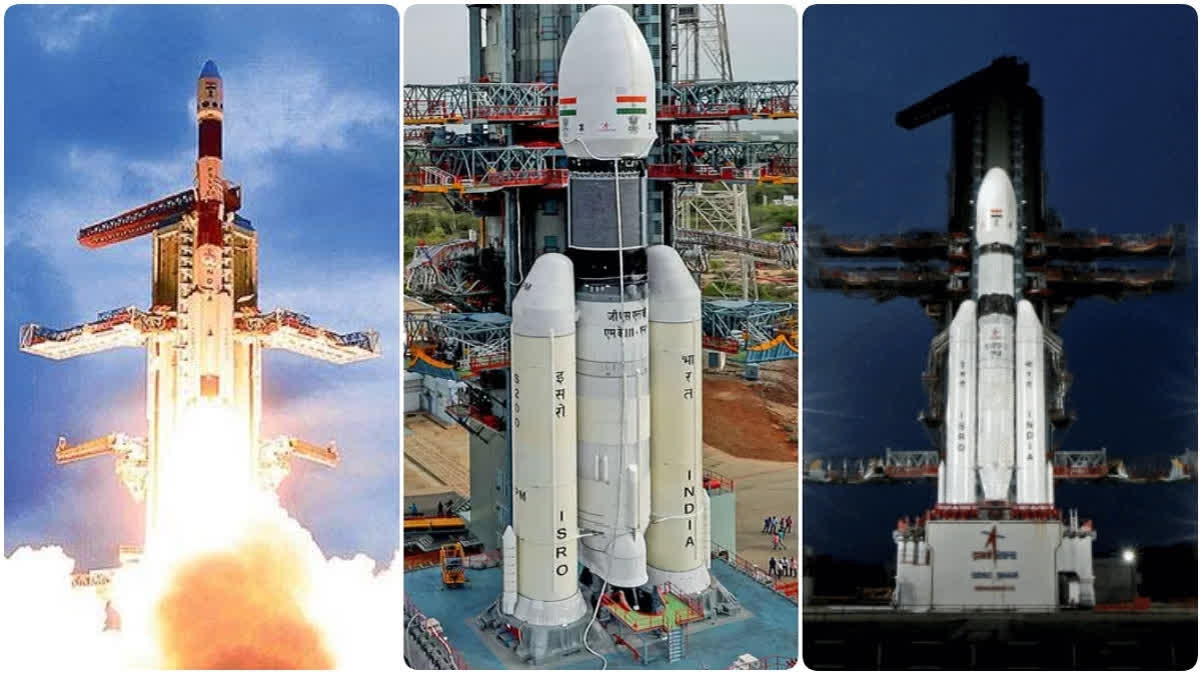Hyderabad: The success of the Chandrayaan-3 mission has given a boost to the Indian Space Research Organisation (ISRO). In this context, India's next experiment on the Moon has become interesting.
After Chandrayaan-3, India's next mission to the Moon may be with Japan, sources in the space body said. In this direction, the talks between the two countries have almost concluded. It has not been named specifically. The Chandrayaan-4 mission may be named 'Lunar Polar Exploration Mission (LUPEX)'. This project can be realized in another three to four years. The launch will be carried out by Japan's H3 rocket. It includes a lander and a rover. The Mission will search the region near the south pole of the Moon. Also, observations will be made on the extent of water and other elements in the form of ice on the surface of the Moon, sources added.
Spaceships and humans find it difficult to withstand the cold temperatures at night, especially in parts of the South Pole. Acquiring the ability to survive at night is critical to conducting long-term research there. An India-Japan spaceship will explore its possibilities. Also, there is a possibility to research knowledge related to vehicular travel. India's next rover could go into the permanent shade of the sun. It is also expected that there may be heavy water in the form of ice.
Just as it did less than four years ago, the ISRO has finally reached the faraway Moon's South Pole after trying hard to get hold of it. It has established itself as a dominant force in the space. However, ISRO is not going to be satisfied with achieving this feat, which is not possible for any country till now. More prestigious, distant, and complex journeys are going to be undertaken in space. The details of the most important experiments:
For research on the Sun
It is a special mission aimed at researching the atmospheric conditions of the Sun. Named 'Aditya-L1', as part of this, a spacecraft will be deployed at Lagrange Point 1 (L1) in the Sun-Earth system. It will be at a distance of 15 lakh kilometres from the Earth. The spacecraft will serve as India's first observatory at Rhodes for solar research. A total of seven payloads will be sent as part of Aditya-L1.
To the Earth's twin sister
ISRO has already sent an orbiter to Mars on one side of Earth. Now it is strongly thinking of sending a spacecraft to the far side of Venus as well. Venus is considered the twin sister of Earth. There are similarities between these two planets in many respects. Through research on it, it is possible to predict the impact of climate change on the systems of a planet
Manned space travel
Until now Wing Commander Rakesh Sharma (1984) is the only one from our country to go into space. It was also not ISRO's mission but a joint mission with the erstwhile Soviet Union. India, which has made great strides in space in recent times, is now gearing up for its manned mission named Gaganyaan. Although it was supposed to be done in 2022, it was postponed due to several reasons including the COVID-19 pandemic. Gaganyaan will be taken up next year. As part of this, three Indian astronauts will spend three days in Rhodes. They have already completed their training.
Team up with America to examine The Earth
ISRO is also gearing up to launch a satellite named 'NISAR' next year in collaboration with the American space research organization NASA to continuously monitor the Earth. This satellite will regularly provide many key details related to the earth's climate, including sea levels and groundwater. It will help to deal effectively with natural calamities like tsunamis, earthquakes, volcanic eruptions, and landslides
On the other hand, a second spacecraft to Mars is also being widely discussed in ISRO. Top scientists are divided on whether to send the orbiter again or attempt a landing. Now in the background of the successful landing process on the moon, the analysis is that ISRO may be inclined to send a lander to Mars.
Meanwhile, ISRO chief S Somanath said that the Aditya mission to the Sun was getting ready for launch in September. "Gaganyaan is still a work in progress. We will do a mission possibly by the end of September or October to demonstrate the crew module and crew escape capability which will be followed by many test missions until we do the first manned mission possibly by 2025," Somnath was quoted as saying by news agency ANI.



